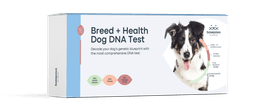Understanding how to make a dog throw up is essential for every dog owner. Quick action can prevent serious health issues if your pet ingests something toxic. However, inducing vomiting in dogs should be done cautiously and only under appropriate circumstances to avoid further harm.
Understanding When to Induce Vomiting
Inducing vomiting is a critical decision. It's crucial only to attempt to induce vomiting in a dog under specific circumstances, like shortly after the ingestion of a toxic substance. However, inducing vomiting is not advised if the dog has ingested sharp objects, caustic substances, or is showing severe symptoms. Doing so could cause more harm than good, highlighting the importance of professional guidance. Timeframe After Ingestion: Inducing vomiting is most effective if done shortly after the dog has ingested a toxic substance, generally within two hours. Beyond this window, the substance may have moved past the stomach, making vomiting ineffective and potentially dangerous.
Type of Ingested Substance: Not all ingested items are safe to vomit up. Sharp objects, caustic or corrosive substances (like batteries, cleaning agents, or certain plants), and heavy or sharp objects can cause more damage to the esophagus or other parts of the body if vomited up. In such cases, vomiting should not be induced.
Dog's Health Condition: Dogs with certain health conditions, such as brachycephalic breeds (Pugs, Bulldogs) that are prone to aspiration pneumonia, dogs with a history of seizures, or those that are lethargic or unconscious, should not have vomiting induced due to the increased risk of complications.
How to Safely Induce Vomiting in Dogs
The question of how much peroxide to induce vomiting in a dog often arises among pet owners. The recommended guideline is 1 milliliter (ml) of 3% hydrogen peroxide per pound of the dog's body weight, not to exceed 45 ml in total. This should only be attempted after consulting with a vet and ensuring that the situation warrants such an action, considering the potential risks involved, such as aspiration pneumonia or exacerbating the problem if the ingested material is caustic. Consult a Professional: Before you do anything, contact your veterinarian or a pet poison control center. They can advise whether inducing vomiting is appropriate for your dog's situation.
Use 3% Hydrogen Peroxide: If advised to proceed, the most common method involves using 3% hydrogen peroxide. The general guideline is to use 1 milliliter (ml) of 3% hydrogen peroxide per pound of the dog's body weight, not to exceed a total of 45 ml, regardless of the dog's size.
Administering the Peroxide: The hydrogen peroxide can be given to the dog using a syringe (without a needle) to squirt the liquid into the back of the dog's mouth. Encouraging them to swallow can be facilitated by gently holding their mouth closed and tilting their head back.
Observation and Second Dose: After administration, closely observe your dog. If vomiting does not occur within 10 minutes, a second dose may be given, but only if recommended by a professional. Do not administer more than two doses without professional guidance.
Post-Vomiting Care: Once your dog has vomited, it's important to prevent them from re-ingesting the vomited material. Remove the vomit immediately and keep your dog calm and comfortable. Follow up with your veterinarian to determine if further treatment or observation is needed.
Avoid Certain Substances: Never use substances like salt, mustard, ipecac, or manual methods (e.g., sticking fingers down the throat) to induce vomiting. These can be harmful and ineffective.
Potential Risks and How to Mitigate Them
There are significant risks associated with inducing vomiting, such as aspiration pneumonia, especially in breeds with short nasal passages. Understanding these risks and how to minimize them is critical, underscoring the importance of professional consultation before taking any action.
Alternative Methods and When to Use Them
In situations where inducing vomiting is not recommended or could be dangerous, seeking immediate veterinary care is essential. Veterinarians may use alternative methods to treat the ingestion of toxins, depending on the substance ingested and the time elapsed since ingestion.
Signs of Poisoning and Immediate Actions
Recognizing the signs of poisoning can be lifesaving. Symptoms can include vomiting, diarrhea, lethargy, seizures, and more. If you notice any of these signs, especially after your dog has ingested something questionable, immediate veterinary care is critical. Quick action can be the difference between life and death.
Conclusion
Prevention is key to avoiding the risks associated with toxic ingestion. Keep hazardous substances out of reach and educate yourself on common household items and foods that can be dangerous to dogs. Always err on the side of caution and seek professional guidance when in doubt.
This guide aims to arm dog owners with the knowledge needed to act swiftly and safely in the event of accidental ingestion of toxic substances. Remember, the wellbeing of your pet is paramount, and when faced with such emergencies, professional veterinary advice is invaluable.
Frequently Asked Questions
How much peroxide to induce vomiting in a dog?
To induce vomiting in a dog, use 1 milliliter (ml) of 3% hydrogen peroxide per pound of the dog's body weight, not exceeding 45 ml in total.
What's the first step if my dog ingests something toxic?
Immediately call your veterinarian or a pet poison helpline. This is crucial for getting specific advice based on what your dog has ingested.
How can I measure the correct dose of hydrogen peroxide?
Carefully measure the hydrogen peroxide according to your dog's weight, using a syringe for accuracy.
What are the risks of inducing vomiting at home?
Risks include aspiration pneumonia, the potential for the substance to cause more damage on the way back up, and the risk of the dog aspirating vomit into their lungs.


